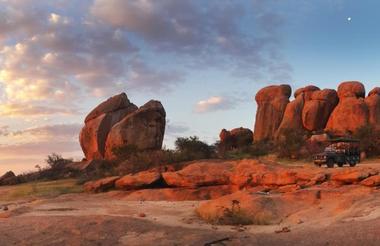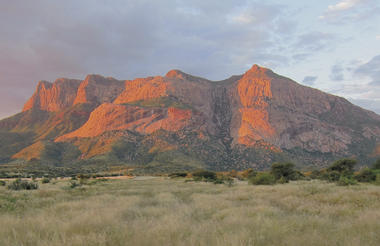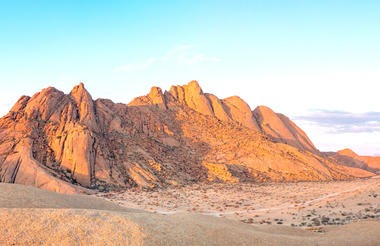There is something mesmerizingly thrilling about exploring Namibia. Wind-swept desert dunes, polished white plains and abundant wildlife create an alluring atmosphere throughout the land. Namibia boasts remarkable natural attractions such as the Namib Desert, the Skeleton Coast and the Fish River Canyon. The wildlife offerings are second to none, and the country holds an average of 300 sunny days per year, making it an ideal destination all year round. Its diverse landscapes offer reliable game viewings regardless of the season and is undoubtedly one of the most exciting and rewarding experiences. The country inhabits more than 20 species of antelope, along with the famous Big 5 and many other magnificent creatures - some found nowhere else in the world. The country is often referred to as "one big desert" and described as a place where nature governs the land. With Namibia being one of the least populated nation on earth, it really is one of the best spots to spend a social distancing holiday.
The capital Windhoek (translated as “windy corner”) is the political, cultural, industrial and economic center of Namibia with 400,000 inhabitants. Windhoek was founded on October 18, 1890, when the foundation stone for what is now known as the “Alte Feste” fortress was laid. Other popular sites include the Tintenpalast, the Christuskirche, the Kaisergymnasium and the Heinitz und Sanderburg. The quiet and well-organized city with a colonial German touch, offers German restaurants and shops, a widespread use of the German language, the celebration of German customs (such as Carnival or Oktoberfest) - the German tradition is reflected everywhere. Even the beer is still brewed according to the German "Reinheitsgebot" (special purity law). Mixed with African traditions and roots, Windhoek offers a unique atmosphere and a relaxed lifestyle that makes the city so endearing.
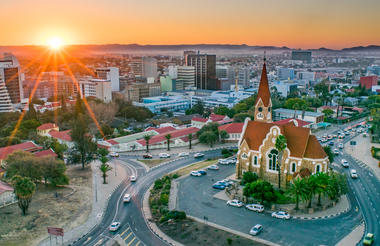
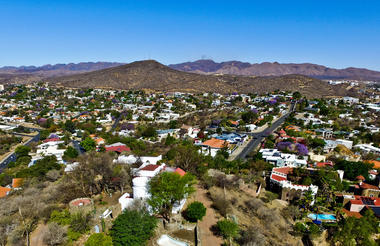
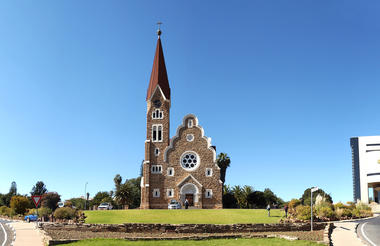
The Naukluft Mountains are perched in the centre of Namibia, making a striking silhouette against the vast, open skies. Several private farms occupy the range's northern reaches, while the spectacular Namib-Naukluft National Park lies south. The rugged landscape of Central Namibia rises steeply from the plains and has a fascinating history, interesting geology and a variety of deep gorges. An array of wildlife can be found in the area, including over 50 species of mammals, such as leopards and zebras, and more than 200 species of birds. Here, the air is crystal clear, and sunsets over the mountains are breathtaking.

Nestled on the west coast of the Namib Desert - where the dunes meet the ocean - is the popular little town of Swakopmund. This laid-back area offers charm in bucket loads with its colonial architecture, quaint restaurants and historic landmarks - such as the "Mole" sunset pier. The cobbled streets and picturesque buildings indicate the rich heritage and culture this town holds, while the museums show its diverse history. This area radiates personality - from the more relaxed daytime charm to the vibrant atmosphere of the night - this is one of Namibia's hidden gems that need to be experienced.
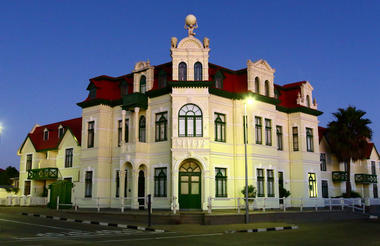
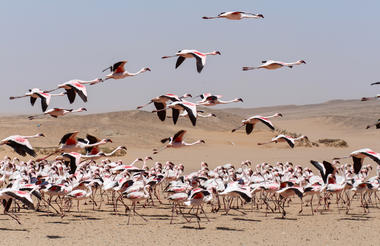
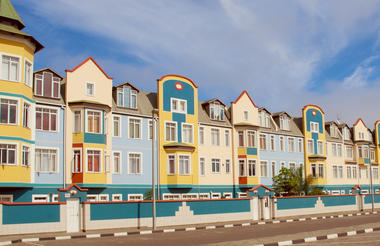
The small town of Uis is located in the Erongo Region of Namibia, at the foot of the Brandberg, Namibia's highest mountain. Just outside of town, the world-famous 'White Lady' rock painting is found within these mountains and is said to be over 20,000 years old. Uis is primarily known for its tin mining, and the area boasts rich amounts of rocks and minerals. Although mining is no longer what it used to be, people come from all around to view the old mines and learn about the culture and history. Many famous geologists visit Uis to study the fascinating geology and rare rocks that are found here.
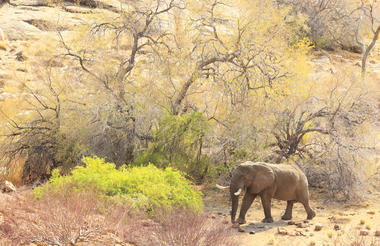
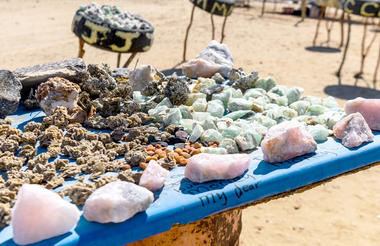
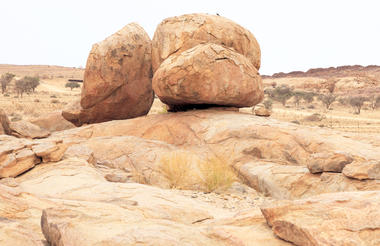
Resting majestically in the heart of Namibia's Damaraland region, The Grootberg Plateau showcases stunning natural landscapes characterised by deep canyons, dramatic rock formations, and expansive vistas. The renowned Grootberg Pass winds through mountains, offering spellbinding views. On the drive, one may come across the Himba people, known for centuries-old livestock farming practices. Encounters along the Grootberg Pass may include purchasing handmade jewellery while supporting the community with donations. Despite its rugged terrain, Grootberg hosts diverse wildlife, including black rhinos, giraffes, and desert elephants, adapted to harsh desert conditions. Additional activities include walking trails, birdwatching, and Damara Cultural Tours. End the day with a 4x4 drive atop the flat plains of the Grootberg Plateau that leads to a jaw-dropping viewpoint and watch the sunset.
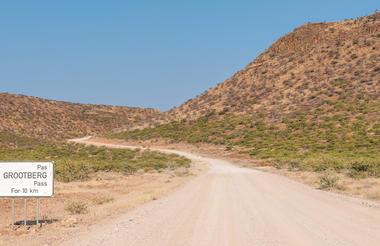
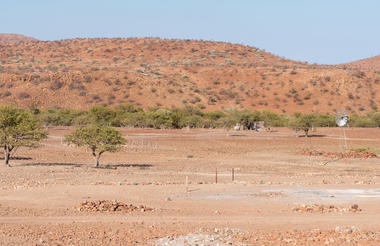
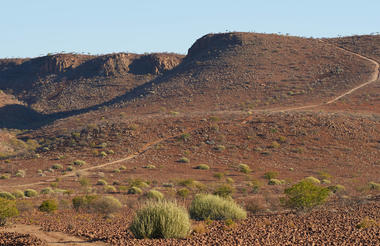
North-western Namibia is home to the small town of Opuwo - the capital of the Kunene Region. Here, ancient traditions meet modern times, as the native Himba culture live independently off the land. Opuwo is an ideal stopover when travelling to Namibia's northern attractions, as you're sure to come across donkey carts, desert elephants, local craftspeople, and the traditional villages of the Himba, Herero and Dhimba people. Opuwo gives you the opportunity to explore one of the most remarkable towns in Africa with its various cultures, dry landscapes and famous Epupa Waterfalls.
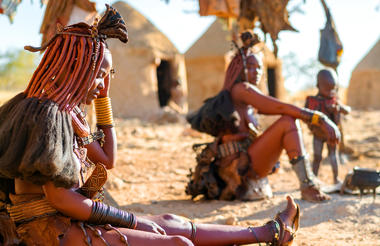
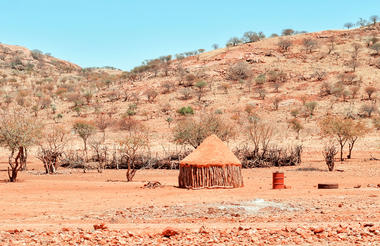
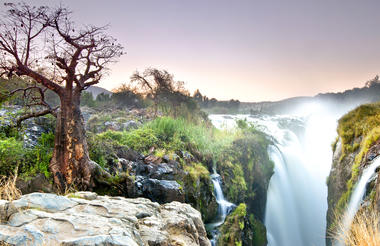
Running along the Kunene River, meandering through palm forests and barren lands, lies the spectacular Epupa Falls, made up of several waterfalls. This picturesque region in northern Namibia is a haven for many animal species, and the tranquil environment homes grand baobab and wild fig trees. The native Himba tribe still live in these lands, maintaining their own traditions and lifestyle. They can be visited when walking within the area. With scenic hikes and cool dips in the shallow rock pools, Epupa falls are always a popular place to visit, and Rose quartz crystals can even be found along the riverbed.

Featuring breath-taking panoramas, unforgettable sunsets, and abundant wildlife, Etosha National Park is Namibia's premier wilderness conservation area. The Etosha Pan - a shallow salt pan covering an area of 5.000 Square kilometers lies in the heart of the Park. Natural springs are found in this dry terrain, making for excellent game viewing. Throughout the Park, the landscape is generally flat, with various habitats ranging from mopane woodland to wide, open, virtually treeless plains. Etosha is home to one of the world's most stable black rhino populations, along with lion, elephant, leopard, cheetah, and hyena.
The western side of Etosha National Park has its own charm and appeal - plus the all-important wildlife encounters. In comparison to the east and centre of the Park, the west offers different vistas and biomes - the most obvious being that the terrain isn't as flat, and the soil doesn't always seem chalky white but appears to be more reddish. A great reason to visit the west is its famous lion population. Other unique species that frequent this side of the park include Hartmann's mountain zebra, black-faced impala and brown hyena. The west flaunts its magical aura through its enchanting landscape and unique scenery.
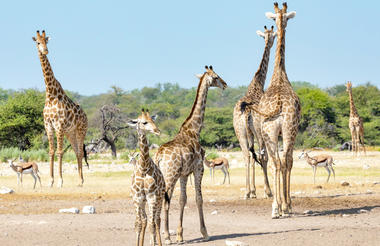
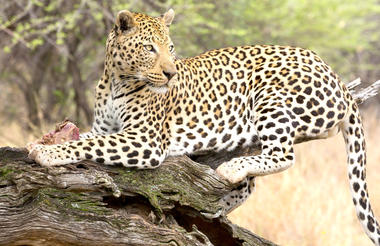
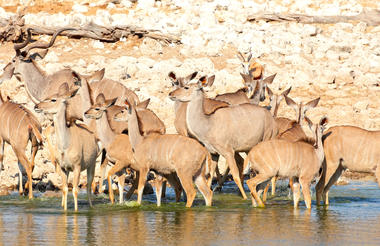
Featuring breath-taking panoramas, unforgettable sunsets, and abundant wildlife, Etosha National Park is Namibia's premier wilderness conservation area. The Etosha Pan - a shallow salt pan covering an area of 5.000 Square kilometres lies in the heart of the park. Natural springs are found in this dry terrain, making for excellent game viewing. Throughout the Park, the landscape is generally flat, with various habitats ranging from mopane woodland to wide, open, virtually treeless plains. Etosha is home to one of the world's most stable black rhino populations, along with lion, elephant, leopard, cheetah, and hyena.
Etosha's southernmost section is known for its rich population of both white and black rhino. Etosha South is home to the Okaukuejo Rest Camp, which is famous for its floodlit waterhole. The many viewpoints overlook picturesque bush-scapes and abundant wildlife. Getting into the South is accessible by Andersson's Gate. Here, visitors can expect to see many animals, including lion and the rare, black-faced impala. However, the most notable of animals found here are elephants. Enjoy guided nature walks, game drives, or simply watching the sunset from this breath-taking location.

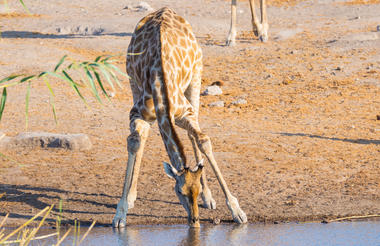
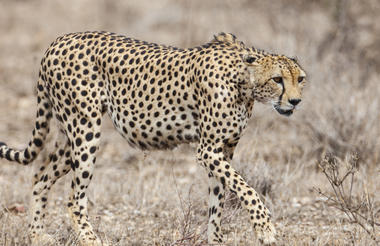
Known for its rugged mountain range, diverse plant and wildlife population, along with the famous Spitzkoppe, Erongo is a place that houses so much of Africa's natural magnificence. Surrounded by volcanic ruins and breath-taking rock formations, the Erongo Mountain range holds dramatic scenic landscapes and indescribable natural beauty. The peaks are best known for their caves and rock art, particularly the 50m-deep Phillips Cave, and home a vast array of reptiles and mammals. The rich biodiversity - with black rhinos and the rare black-nosed impala native to the area - leaves people wanting more.
